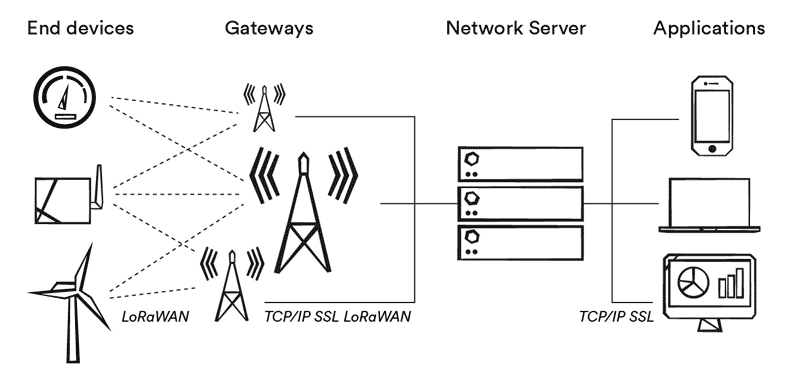LoRaWAN
The LoRaWAN protocol is a Low Power Wide Area (LPWAN) networking protocol designed to wirelessly connect objects such as battery-powered sensors to the internet in regional, national or global networks. It meets the requirements needed by Internet of Things (IoT) devices, such as bi-directional, end-to-end security and positioning services.
It enables end devices with LoRa ( Lo ng Range ) module to transfer data to each other and to the server via radio frequency bands. With the increase in devices with LoRa modules around the world, the demand for LoRaWAN systems is increasing.
Is LoRaWAN really needed?
Mobile operators admit that they can connect only 10-15% of the estimated volume of IoT devices with classical (licensed bands) cellular technologies. WiFi and Bluetooth Smart serve some applications well, but in agricultural applications it is unlikely to connect humidity and temperature sensors to WiFi. LoRaWAN, which has inherently long range and low power features, is the “pioneering” technology for IoT applications where remote locations, easy deployment, thousands of connections per gateway and long battery life are required.


